Guide to Types of Wedding Invitation Enclosure Cards
In this guide we will look at a few extra wedding invitation enclosure cards that you may want to include, besides the standard reply envelopes & cards.

A lot of your wedding information (like the directions and hotel information) can be merged onto a separate card enclosure, depending on available space. However, if your wedding is a very formal event or you want to follow wedding stationery etiquette, additional enclosure cards are recommended. Wedding stationery should never look crowded or aesthetically unpleasing.
Types of Enclosure Cards
The following list outlines all the enclosure card types that you could ever need when sending out your wedding invitations.
Maps and Directions
Maps or direction cards are a great way to explain how to get to your ceremony location, reception venue, or any little points of interest that your guests may feel inclined to visit during the time between the ceremony and the wedding reception.
In today’s world of Google maps, mobile phone map apps, and GPS dash units, you may decide to skip the map enclosure altogether and opt to add the full venue address on the invitation — a perfectly reasonable thing to do.
However, if your venue is located in a remote area where mobile phone reception is not guaranteed, or an area that a lot of your guests may not be familiar, providing a map is a great idea. If your stationery budget allows for a customized map to match the invitations, go for it!
Avoid enclosing a plain photocopied map as it will take away from the presentation of your gorgeous wedding invitations.
If the wedding ceremony and reception are not near each other, a direction map like the one below can be super handy for your wedding guests in the shuffle of changing venues.
Reception Card
When your reception is held in a different location than the ceremony venue, a reception enclosure card provides ample room to add the venue name, address, and time that guests should arrive — something most invitation designs don’t allow sufficient space.
The tradition of tucking an additional reception card into the wedding invitation sprung from the need to invite a select group of guests to both the ceremony and reception. Nowadays, such an option in generally considered not polite; If you are invited to the ceremony, you are also invited to the reception.
Accommodation Card
A common courtesy to guests from out of town is forwarding names of a few affordable and conveniently located hotels in the area near the wedding venue. Alternatively, you can provide information on the hotel(s) that you have reserved a block of rooms and established a special group rate. In that case, make sure to provide the group booking ID.
You can either convey this information through an accommodation insert card or list the information on your wedding website. You don’t have to include all the hotel amenities; just the hotel names, address, phone number, website and basic room rate. If you plan to forgo the accommodation insert and provide the information on your website, be cognizant of guests who may not be online (grandma?) and offer specific information to these guests.
Transportation Card
A transportation insert card lets your guests know exactly what transportation options exist, such as a courtesy shuttle to any of the venues. The card generally reads:
“Transportation will be provided from the ceremony to the reception.”
Another option is to add the above line onto the end of the accommodation or map/direction insert card. Local transportation options, parking, or public transit lines can also be included on a transportation card.
Rain Card
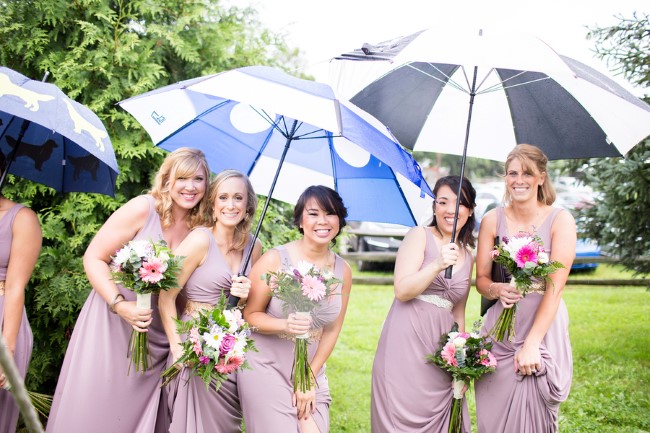
We love our outdoor weddings on Love & Lavender, but we know all too well that an outdoor wedding in certain locations (Pacific Northwest for example) should have a backup rain plan. A rain insert card lays out an alternate location or wedding day plan in case of rain.
Ceremony Card
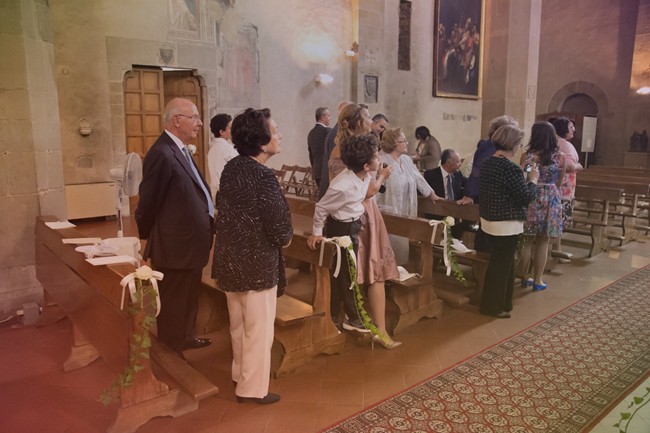
Have you decided to have an intimate ceremony with only a few close family/friends, followed by a larger reception? In that case, a separate ceremony card will let your special guests know they are invited to the ceremony.
Pew Card
Also known as “within-the-ribbon” cards, a pew card lets relative and close friends know they have a seat in a reserved seating area, and that they should present this card to an usher upon arrival.
Website Address
Wedding websites are a popular way to let your guests know about wedding details. You can either put the website address on a small enclosure card for easy referral, or on the save-the-date card.
Note: Proper wedding stationery etiquette dictates that the website address should not appear on the invite.
Attire Card
It can sometimes be difficult to figure out what one should wear to a wedding. If you do choose to have a dress code (e.g., black tie) for your wedding, specify it in the lower right corner of the invitation. Some couples feel the need to go into more detail by using a separate attire card, but I think it makes sense to leave that sort of information for a wedding website.
At-home Cards
The stationery tradition of at-home cards were a way to inform family and friend of a couple’s new address. They have since found a new purpose: to let everyone know whether the bride is changing, keeping, or hyphenating her surname.
The title of the card reads, “At Home”, and can include the date of return from your honeymoon. They’re no longer commonly used and are hard to find these days!
Rehearsal Dinner
Traditionally, the school of wedding etiquette held that the groom’s family hosts the rehearsal dinner and sends out separate rehearsal invitations. However, if all your wedding guests are invited to the rehearsal dinner, it is more efficient and less expensive to include a small card in the invitation package.
If only a select few guests are invited to the private rehearsal event, it is too easy to make a mistake when stuffing the invites to send a friend Susie, when you meant to invite Auntie Susan. I recommend separate invitation for the rehearsal dinner.
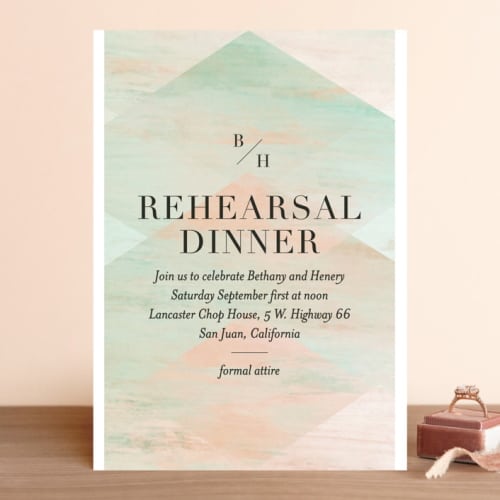
Peripheral Events
Are you planning to organize peripheral wedding events like a welcome dinner, a round of golf, excursions, or a morning after wedding brunch?
It is a good idea to prepare cards and include all the relevant information. If all guests are invited to these peripheral events, it is okay to let everyone know by way of your website or word a mouth. However, if not everyone is invited, use a separate card to avoid confusion.
For multiple events, you can create a single card that allows room to RSVP to each.
A good idea for a destination wedding is to use a mini flipbook (shown above) to include the itinerary of events and activities that guest can participate. A structured itinerary helps guests understand what is going on during the destination wedding time period and will save you from having to answer questions over and over again.
Bonus Tip: When you receive items from you wedding stationery supplier, make sure to count each invite/envelope/card to make sure that nothing is missing. You don’t want to end up short four direction cards or seven response cards, and only finding out once you are done stuffing the envelopes!
*Did you find this useful? Did you learn something from it? If you did, SAVE THIS PIN below to your Wedding Planning board and check this post out at a later time*
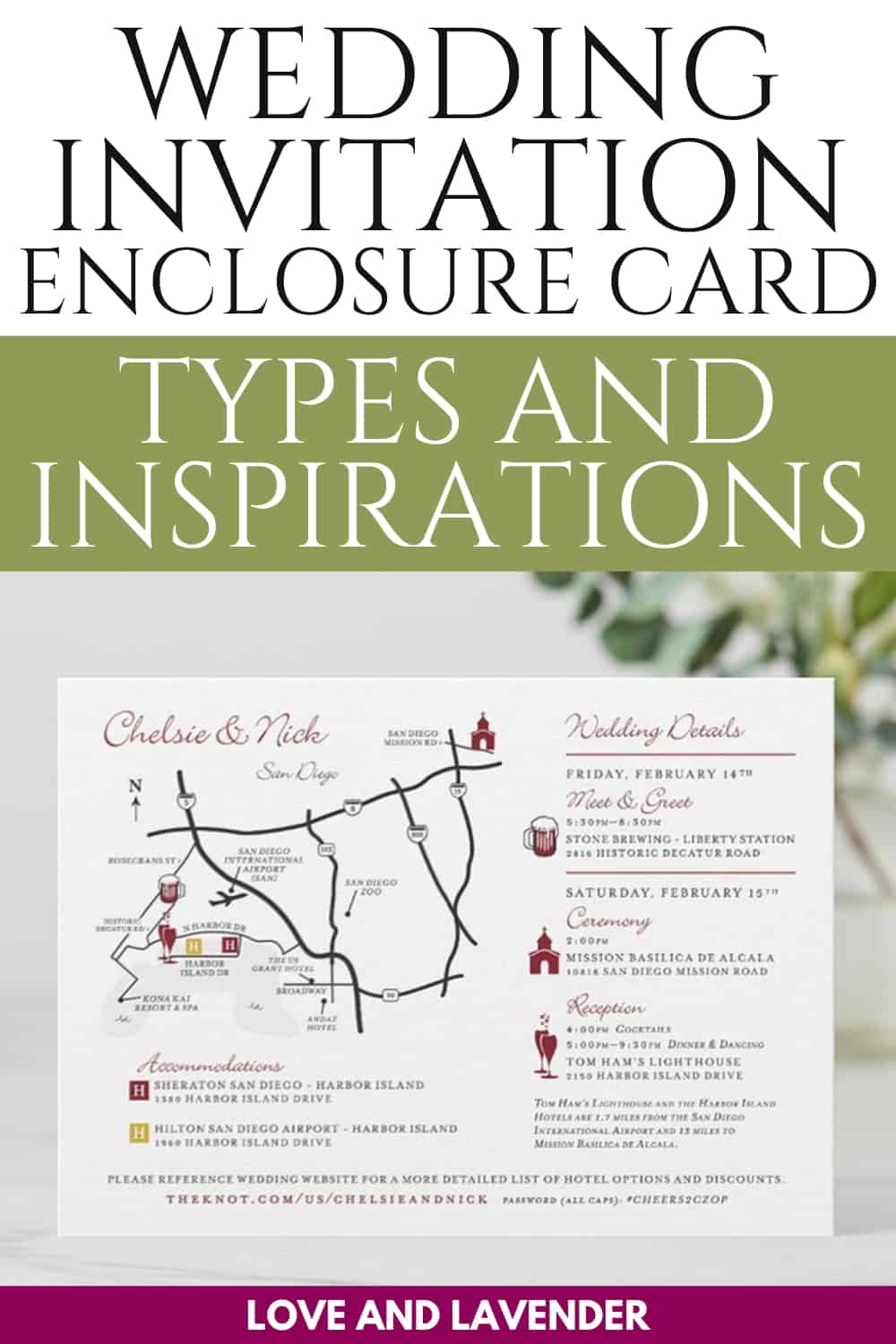

Meredith
Despite her dreamy wedding blogger lifestyle, Meredith's day job is running ClassicVeils.com and a full-time mom to an active toddler. If she could, Meredith would spend her days taking cruises, helping animals in need, and watching Big Brother!

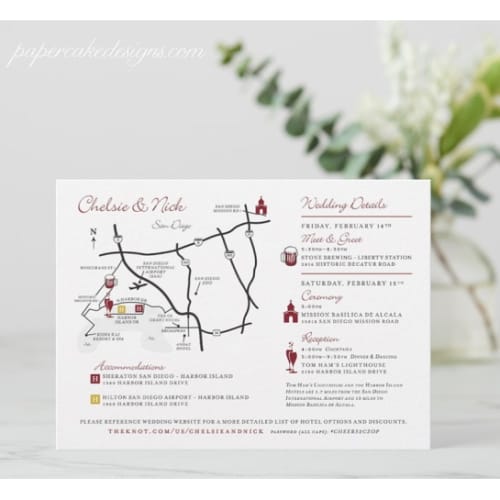

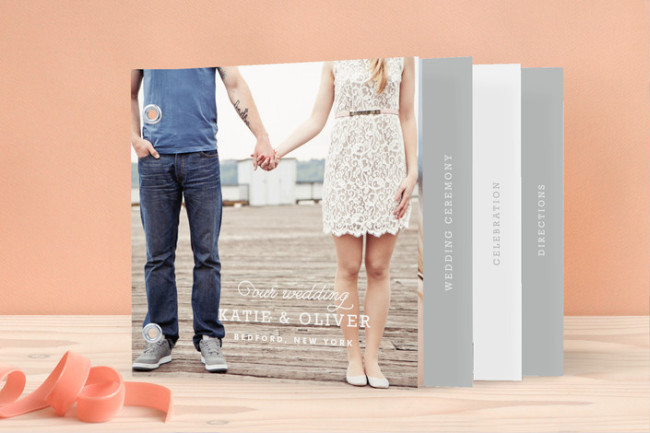





I would think response card envelopes can be pre-printed with the host’s name and address. By inserting postage stamp inside the response card envelopes can be a gracious gesture which will increase the percentage of responses from invited guests.